If you want to authenticate an important PDF on your Linux device, you need a tool that lets you add signatures to the document.
But how do you find a tool that is reliable and works seamlessly on your operating system? This can be tricky given the limited PDF signing options on Linux platforms.
But don’t worry. This guide shares three tested tools that let you sign PDF in Linux via image-based, handwritten, and digital signatures.
And if you also work on non-linux platforms, UPDF can help you sign your files on both desktop and mobile devices. You can click below to download and try it now!
DOWNLOAD BUTTON
Part 1. Command-Line Tools for Signing PDFs on Linux
This section will show you three effective ways to sign PDFs directly on Linux. However, make sure you have a basic understanding of using a command line interface before proceeding.
Option 1: Use LibreOffice Draw (Best For Image-Based Signatures)
LibreOffice Draw is a free and open-source tool. It lets you easily open, edit, and add Linux PDF signatures using images or drawing overlays.
Here are the steps.
Step 1. Press “Ctrl+Alt+T” on your keyboard to open the terminal. Then, enter the following code and press “Enter” to install LibreOffice.
sudo apt install libreoffice
Step 2. When prompted to continue, press “y” and hit “Enter” again. Then, wait for the installation to complete.

Step 3. Now, launch LibreOffice on your system. Click “File” from the top left and choose “Open.” Then, upload your desired PDF.
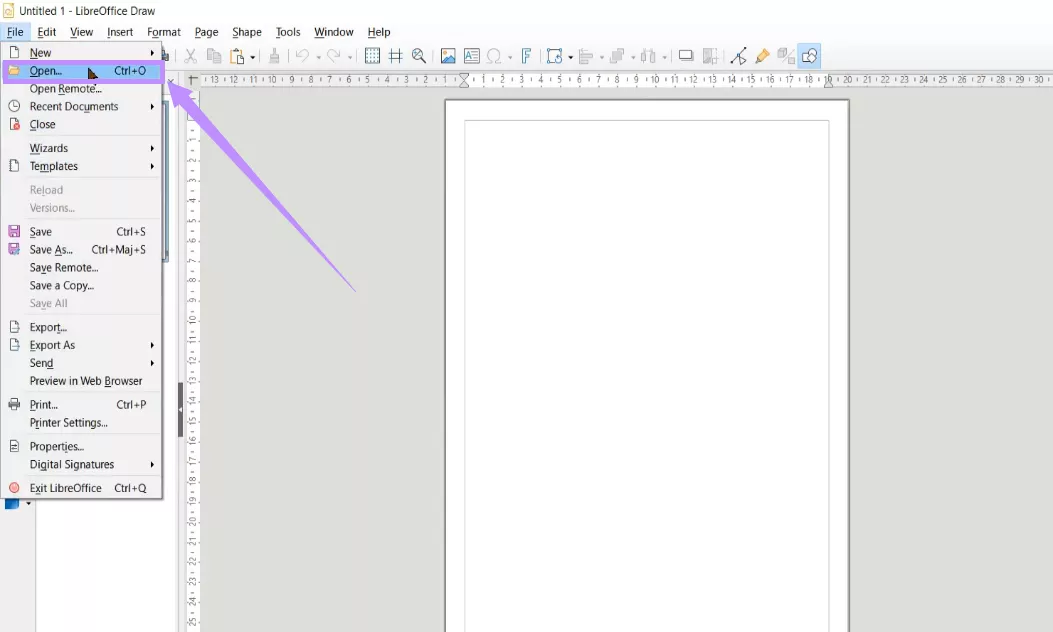
Step 4. Go to the “Insert” menu at the top and choose “Image.” Then, upload a PNG or JPG file containing your signature. Once uploaded, adjust its size and position as needed.
Step 5. After signing, go to “File” and choose “Export as” > “Export as PDF.”
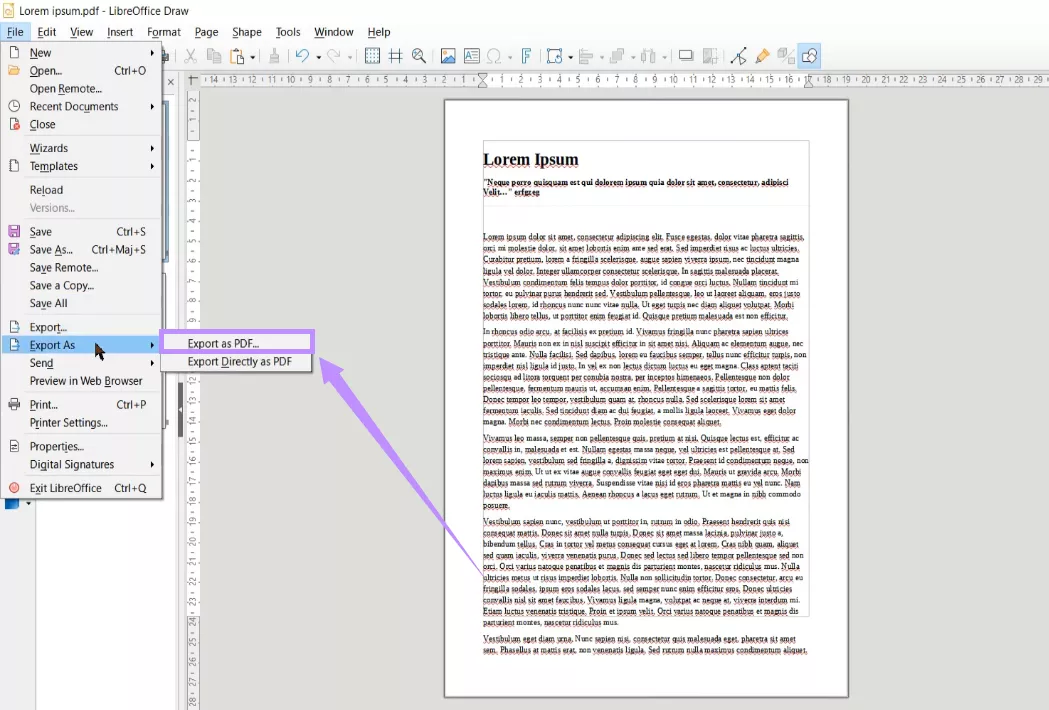
Step 6. From the new window, adjust export settings if needed. Then click “Export.”
Option 2: Use Xournal++ (Best for Handwritten Signatures)
Xournal++ is an open-source note-taking and PDF annotation tool. It can also aid Linux PDF signing by adding handwritten and typed signatures.
Here’s how it works.
Step 1. Open Terminal by pressing “Ctrl+Alt+T” keys. Then type the following code and press “Enter” to install Xournal++.
sudo apt-get install xournal
Step 2. Launch Xournal++ and click “File” from the top left. Choose “Open” and upload your PDF.
Step 3. Click the “T” icon at the top. Then click where you need to sign and type your signature. Alternatively, use the “Pencil” tool to write your signatures manually.

Step 4. Once you’re done, go to “File” and choose “Export to PDF” to store the file.
Option 3: Use DigiSigner (Best For Digital Signatures)
DigiSigner is a Java-based application that allows you to add legally recognized digital signatures. Here are the steps to install and add digital signs to PDFs in Linux using DigiSigner.
Step 1. Open Terminal and input the following command. Then, press “Enter” to update the repositories:
sudo apt-get update
Step 2. Once updated, type the following command to install jdk1.8 and jre1.8.. Then, press “Enter.”
sudo apt-get install openjdk-8-jdk openjdk-8-jre
Step 3. Now, connect your USB or DSC (Digital Signature Certificate) device to your system. Then, copy the file “digisigner-4.0-install.zip” to the Desktop and extract it.
Step 4. Open the DigiSigner-4.0 folder. Then, right-click and choose “Open in Terminal.” In Terminal, type the following code and press “Enter.”
sh digisigner.sh
Step 5. DigiSigner will open on your device. From here, click the “Open document” icon at the top and upload your PDF.

Step 6. Once your file opens, click “Sign Document” at the top. Then, use the crosshair to draw a box over the area you want to place the signature.
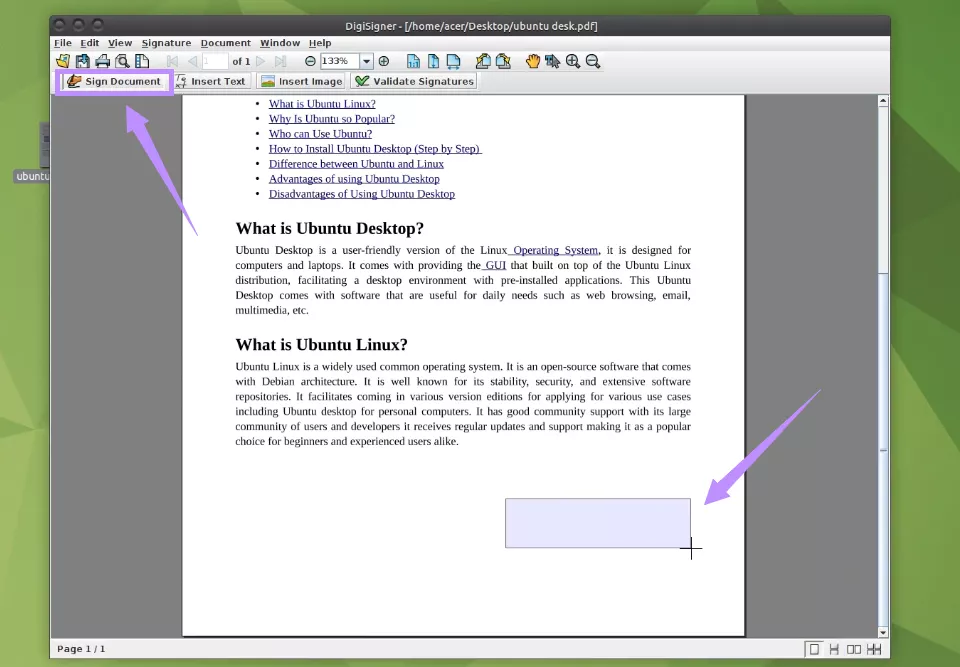
Step 7. A pop-up will appear. Enter your user PIN here and click “OK.”
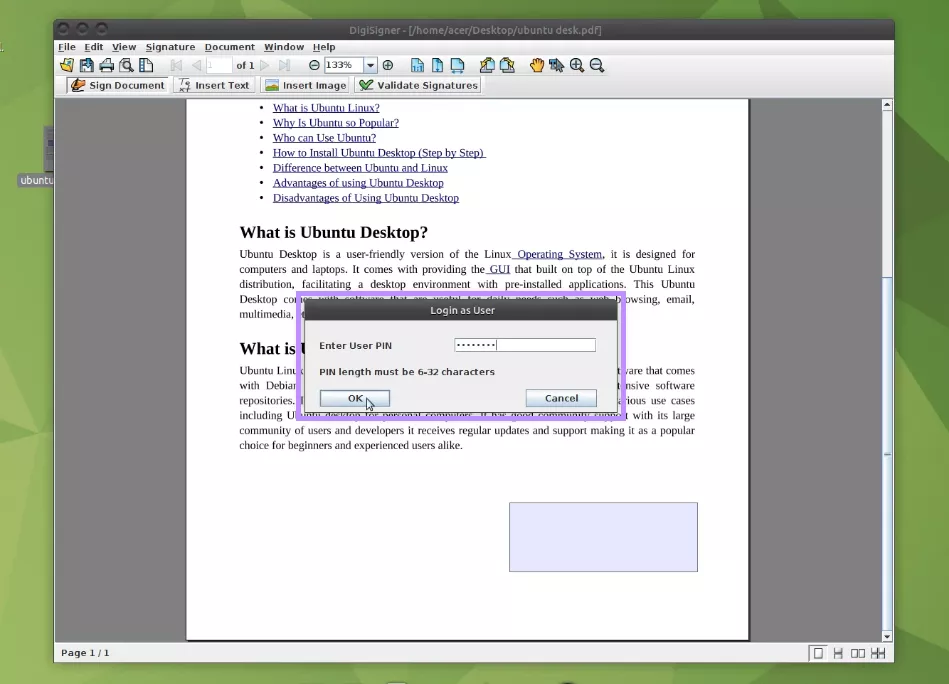
Step 8. Review the details of your digital signature and click “Sign” to place it in the document. Then, save the file on your device.
Part 2. Bonus Tip: Use UPDF to Combine PDF on Non-Linux Platforms
If you also work on non-Linux platforms, there’s an even simpler way to sign PDFs without any command-line work. UPDF is the best tool for signing PDFs on Windows, Mac, Android, and iOS. It’s lightweight and extremely easy to use. You don't need any complex commands or technical setup. Moreover, UPDF is a complete PDF toolkit that helps you read, edit, annotate, convert, and manage PDFs more productively.
So, make sure to download and install it on your device. Then follow these steps to sign your PDFs.
Steps to Sign PDFs on Desktop
Step 1. Open your PDF in UPDF. Then, click the “Signature” icon in the top toolbar.

Step 2. Click “Create” from the menu. Now, you have three options to create signatures:
- Mouse: Use your mouse to draw handwritten signatures.
- Keyboard: Type your name to add a signature.
- Image: Upload an image-only file containing your signature.
Step 3. Once you've designed your signature, click “Create” and add it to your PDF.
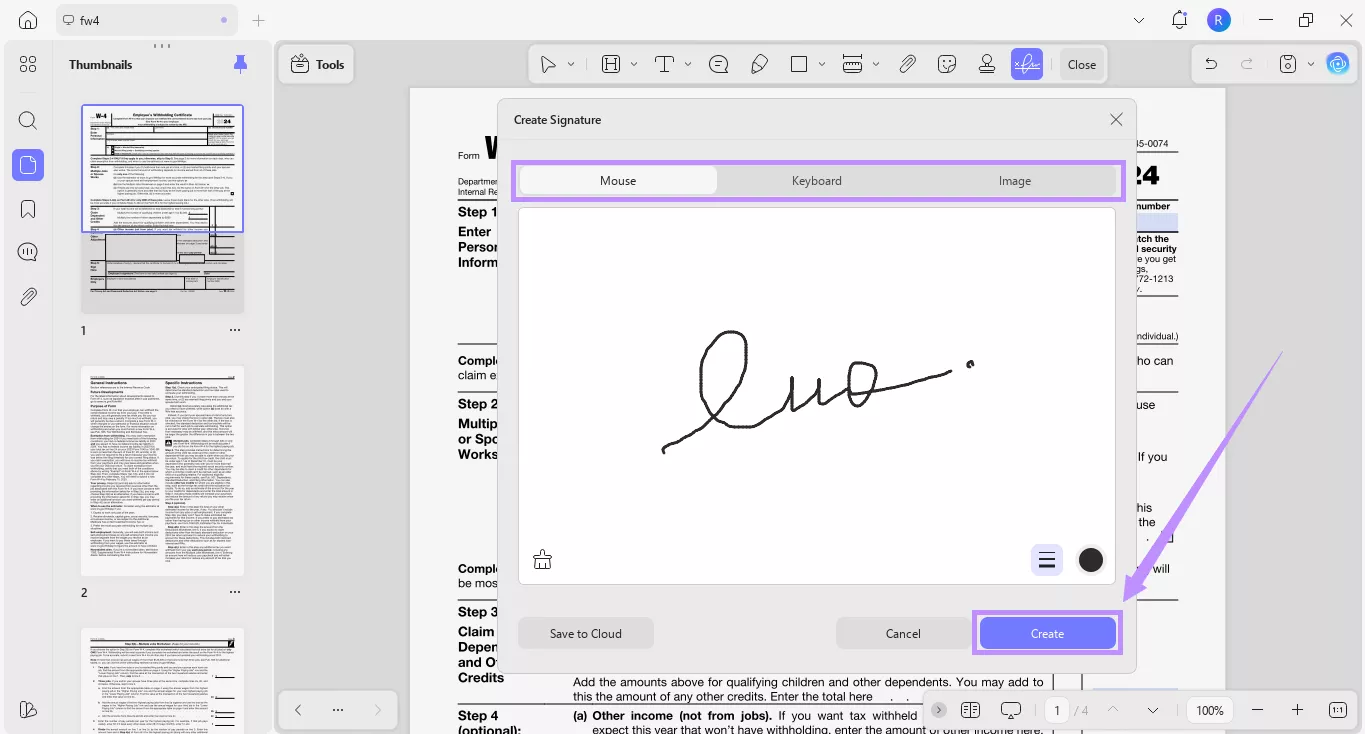
Step 4. If you want to add a digital signature, go to “Tools” > “Form.” Then, click the “Digital Signature” icon at the top.
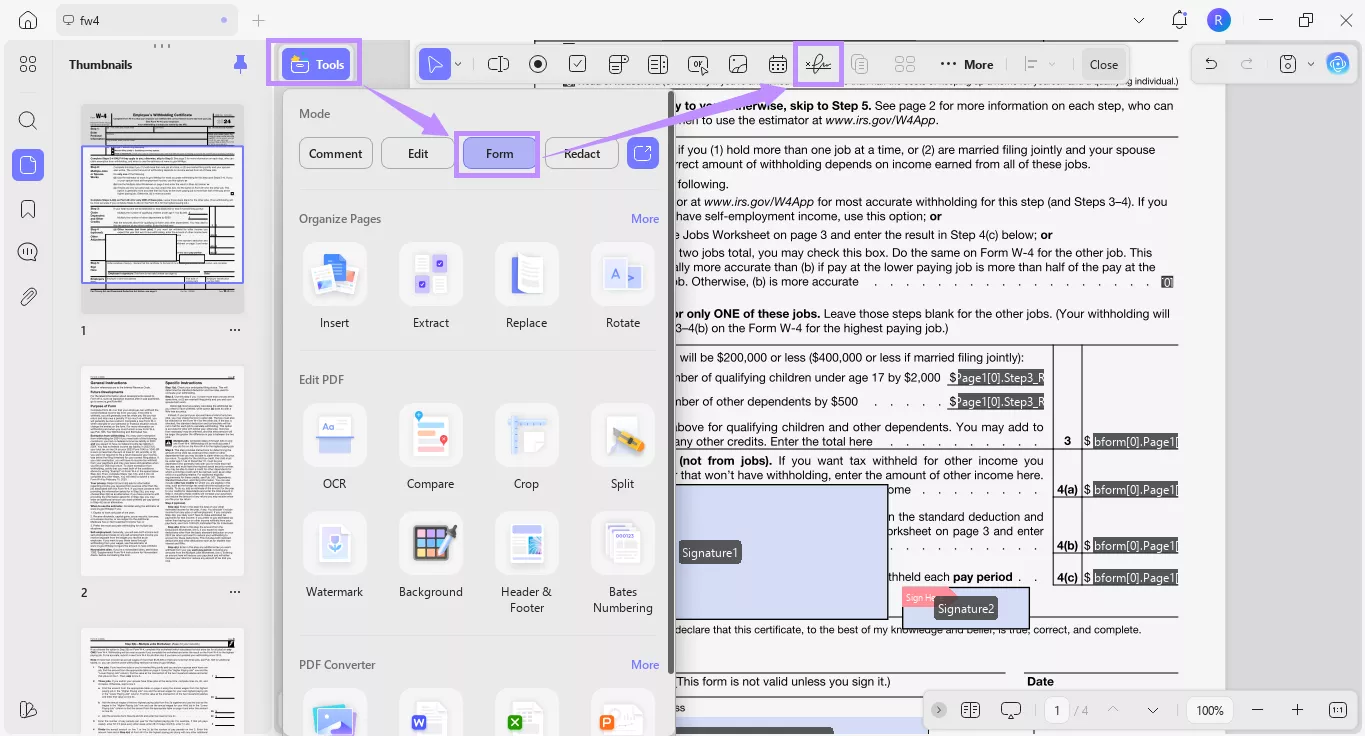
Step 5. Click on the page to place the signature box. Close the toolbar at the top. Then, double-click the box to add your digital signature.
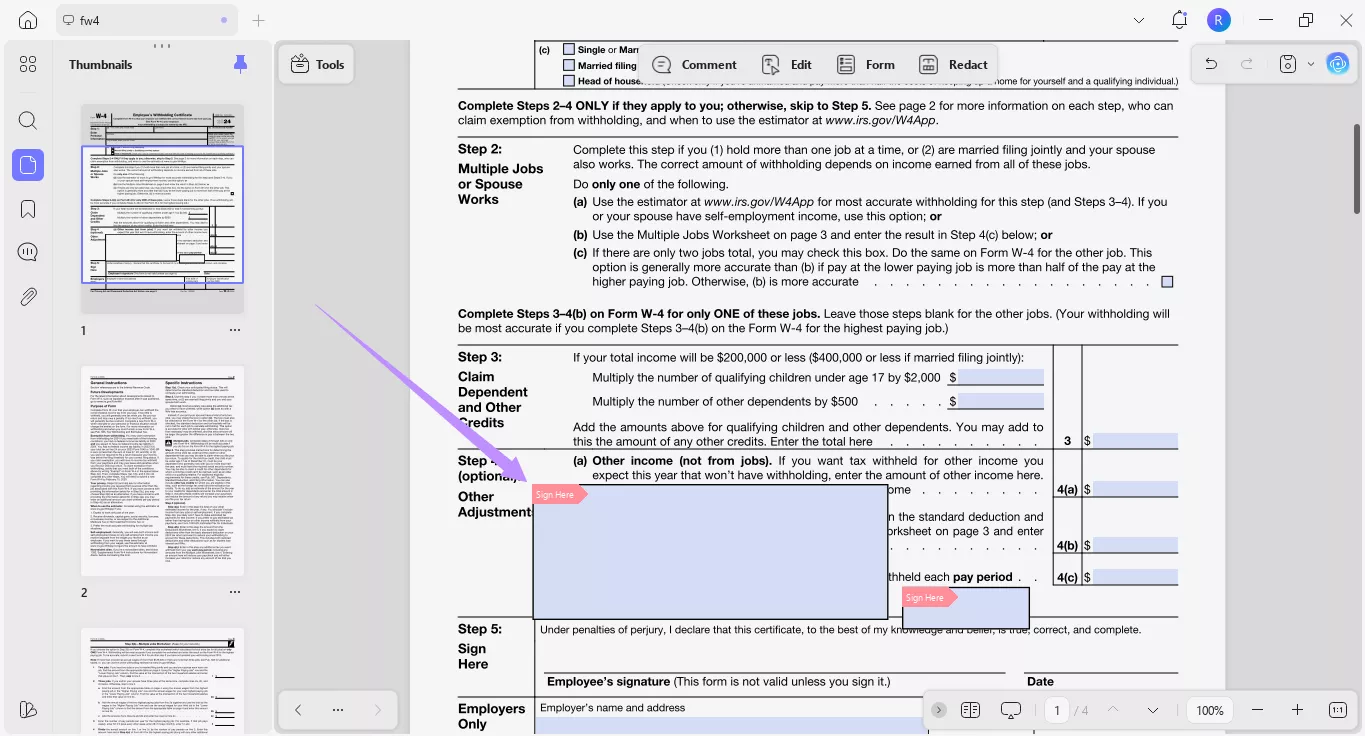
Steps to Sign PDFs on Mobile
Step 1. Install UPDF on your Android or iOS device. Then, go to “Files” and open the PDF you want to sign.
Windows • macOS • iOS • Android 100% secure
Step 2. Once your file opens, tap the “Sign” option in the bottom toolbar.
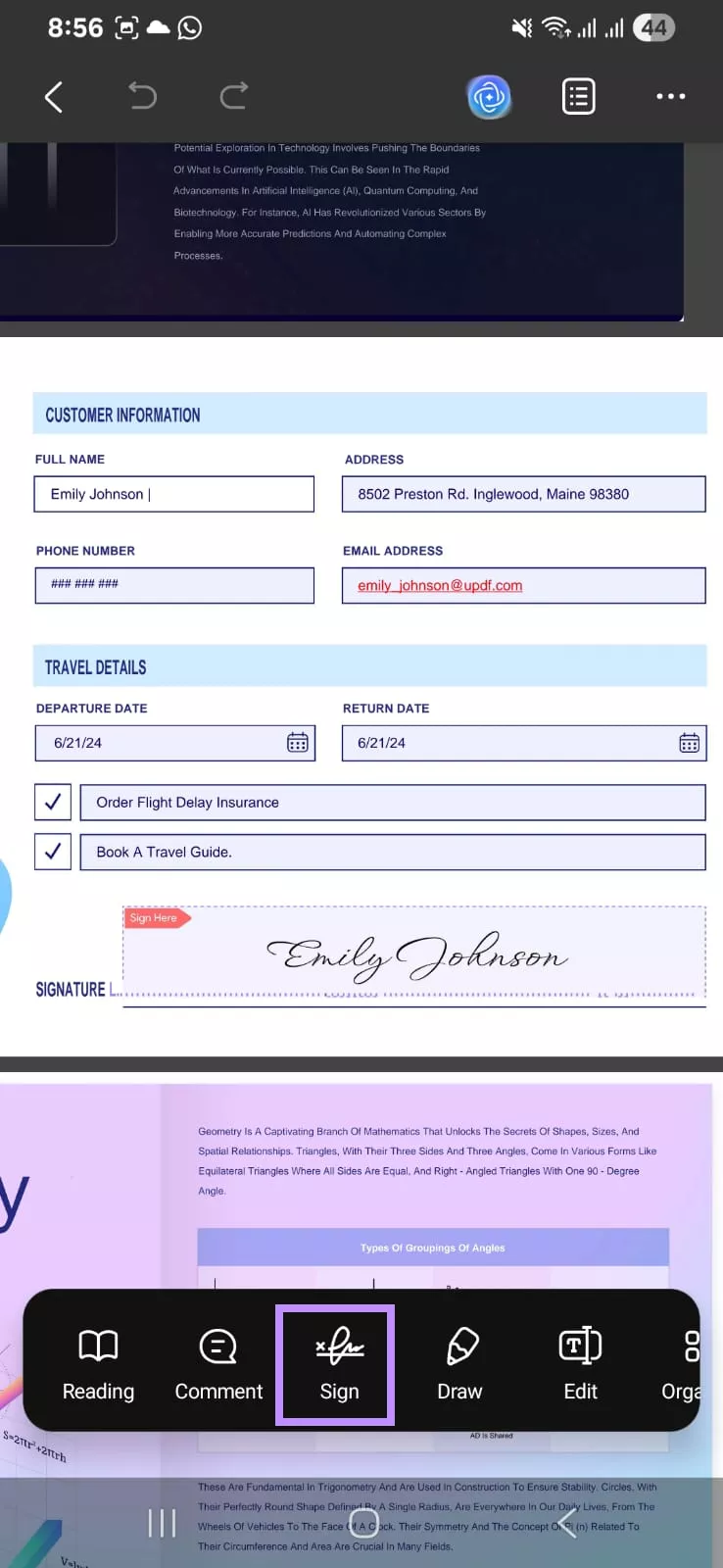
Step 3. Select “Signature.” Then, choose “Handwrite Signature” or add “Image Signature.”

Step 4. Once you’ve created your signature, tap on the page where you want to place it.
Conclusion
To sum it up, you can sign PDF in Linux using reliable command-line tools like LibreOffice Draw, Xournal++, and DigiSigner. These can help you add image-based, handwritten, and digital signatures. But if you also work with documents on non-Linux platforms, UPDF can help you sign your documents effortlessly. It’s easy to install and available on Mac, Windows, iOS, and Android. Click below to download and try it today!
Windows • macOS • iOS • Android 100% secure
 UPDF
UPDF
 UPDF for Windows
UPDF for Windows UPDF for Mac
UPDF for Mac UPDF for iPhone/iPad
UPDF for iPhone/iPad UPDF for Android
UPDF for Android UPDF AI Online
UPDF AI Online UPDF Sign
UPDF Sign Edit PDF
Edit PDF Annotate PDF
Annotate PDF Create PDF
Create PDF PDF Form
PDF Form Edit links
Edit links Convert PDF
Convert PDF OCR
OCR PDF to Word
PDF to Word PDF to Image
PDF to Image PDF to Excel
PDF to Excel Organize PDF
Organize PDF Merge PDF
Merge PDF Split PDF
Split PDF Crop PDF
Crop PDF Rotate PDF
Rotate PDF Protect PDF
Protect PDF Sign PDF
Sign PDF Redact PDF
Redact PDF Sanitize PDF
Sanitize PDF Remove Security
Remove Security Read PDF
Read PDF UPDF Cloud
UPDF Cloud Compress PDF
Compress PDF Print PDF
Print PDF Batch Process
Batch Process About UPDF AI
About UPDF AI UPDF AI Solutions
UPDF AI Solutions AI User Guide
AI User Guide FAQ about UPDF AI
FAQ about UPDF AI Summarize PDF
Summarize PDF Translate PDF
Translate PDF Chat with PDF
Chat with PDF Chat with AI
Chat with AI Chat with image
Chat with image PDF to Mind Map
PDF to Mind Map Explain PDF
Explain PDF Deep Research
Deep Research Paper Search
Paper Search AI Proofreader
AI Proofreader AI Writer
AI Writer AI Homework Helper
AI Homework Helper AI Quiz Generator
AI Quiz Generator AI Math Solver
AI Math Solver PDF to Word
PDF to Word PDF to Excel
PDF to Excel PDF to PowerPoint
PDF to PowerPoint User Guide
User Guide UPDF Tricks
UPDF Tricks FAQs
FAQs UPDF Reviews
UPDF Reviews Download Center
Download Center Blog
Blog Newsroom
Newsroom Tech Spec
Tech Spec Updates
Updates UPDF vs. Adobe Acrobat
UPDF vs. Adobe Acrobat UPDF vs. Foxit
UPDF vs. Foxit UPDF vs. PDF Expert
UPDF vs. PDF Expert







 Enya Moore
Enya Moore 

 Enola Miller
Enola Miller 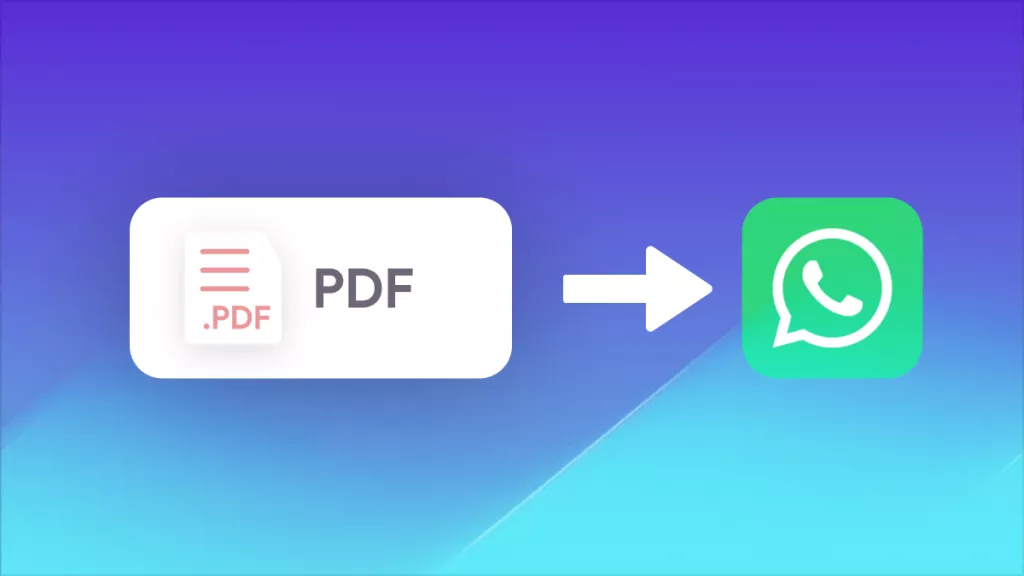
 Enid Brown
Enid Brown 
 Delia Meyer
Delia Meyer